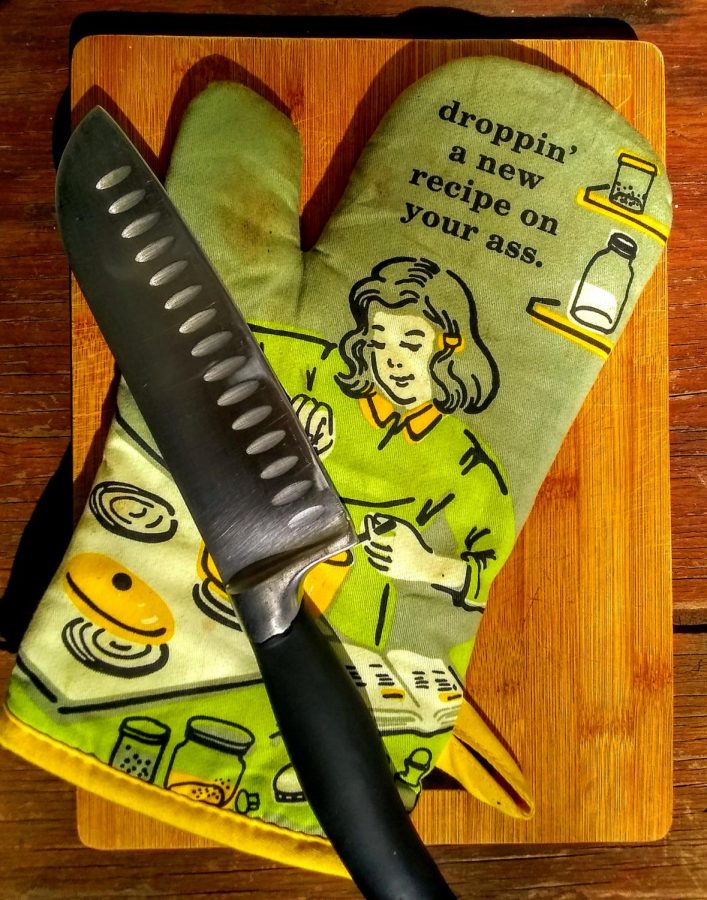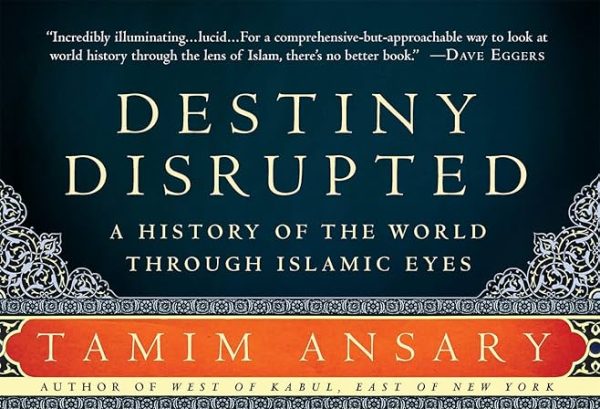The high-speed low-drag complete college kitchen
Get your kitchen prepped! This fall’s bound to hit. Photo by Ian Hilton, 5/10/2021.
This past year hasn’t been ideal for most of us students. Our inability to live on campus has kept us from an aspect of college life synonymous with attending a university, but we’re coming back this fall!
During your summer, and in anticipation of acquiring housing in Chico next semester, I implore you to consider how to readjust from the past year — which somehow felt like five — regarding health. More specifically, how one adequately provides sustenance for themselves in respect to a kitchen that’s high-speed and low-drag: Fully, but minimally, ready for whatever you want to make.
What composes a definitive “fully stocked kitchen”? We might not be making our own pasta by hand, but we’ll certainly need more than one cutting board to facilitate a meal. But how many are strictly necessary? How many of what kind of knife? Is a waffle maker truly needed?
This article is an attempt to guide less-than-experienced cooks toward (almost) everything they might need to cook the most dishes; a bang-for-your-buck handbook. Broken up into applications, I hope this article does a minimum of two things:
- Broaden your horizon of what a utility-based kitchen can do
- Shame Airbnb into providing at least the basic standards that dictate the rubric of what a “fully-stocked kitchen” should entail
Random Notes First
We’re building a kitchen here. Let’s assume we have neither an abundant budget nor unlimited space. In that spirit, the idea is to make the most from the least: less is more. Don’t buy 15-piece knife sets or a Ninja blender just yet. Dip your toes into the basics before full investment and get your necessities. There are some exceptions. Are you a smoothie fanatic? Getting a Ninja off the bat suddenly doesn’t seem like such a frivolous idea. Think about your diet, but also what you want your diet to become. Plan wisely and accordingly, and avoid gimmicks.
Refrain from investing in one-use items. The point I’m trying to illustrate is that paying one time for many different applications is beneficial in both a value and temporal sense. I was once gifted a quesadilla maker. It was basically a flat waffle maker (The waffle maker — also a waste in my opinion. But maybe you can’t live without waffles? This is also a debate to consider. Waffles have been known to be delicious.). Why would I need a quesadilla maker? I can make superb quesadillas with a skillet and practiced technique. The quesadilla maker was a dust collector and a waste of my friend’s money. But a garlic press might be the exception to this suggestion — its one use saves both time and effort.
Never get low on salt and pepper. S&P is the most versatile pair of spices, so I recommend getting them in bulk. And think about a pepper grinder — there’s much more to peppercorn than the finely-ground product pushed on consumers.
Invest in quality hot pads. Cheap ones wear out quickly — this is one area where you get what you pay for. I should have led with this, but safety first. No one enjoys a meal while injured.
A screen to place on a frying pan that prevents grease splatter makes cleanup much easier — these can also be found for cheap at either retail or thrift stores.
Don’t neglect obtaining an apron. Thick canvas or cotton aprons protect clothes and can still breathe. They can also highlight your personality, so make this purchase personal.
Cutlery
Like a good relationship or a steady house, let’s first look at our foundation: what’s below the cut. Cutting boards, essential to the concept of cutlery, are a matter of preference. Some like plastic because the cleanup is remarkably easy. Others prefer a dense wood like oak because of the sturdiness. I have both, as well as a couple of bamboo boards, because I find that bamboo encompasses both qualities. Are you doing more slicing (delicate) or chopping (rigid)? No matter your choice, I recommend obtaining at least three basic boards:
· A big one — about 20 inches by 25 inches for prepping lots of veggies in one go or pounding out meat
· A medium one — 9 inches by 12 inches for everything else
· A small one — 6 inches by 9 inches for more fragrant foods, especially garlic. I keep a board specifically for garlic. No one wants their watermelon to taste like garlic.
Now! Everyone’s favorite: Knives. Wusthof and Henkel produce impressive German knives. Shun and Miyabi make superb Japanese knives. The same can be said of TB Groupe from France. I bought an Analon knife from Ross 20 years ago for $15. I still have that hulking bruiser of a knife; it’s pictured with a few of my recipes. My point is that you should search and find a good knife; you’ll know it when you hold it. Realistically, you’re going to be using your main knife frequently and it should feel appropriate for your hand.
Is it too “blocky”? Pass it by, you’ll only get hot spots. Is it too smooth, where you could imagine it flying from your wet hand? Keep looking. Your knife will find you, in a Zen kind of way.
More generally, we’re talking about a steel quality/construction ratio. Where are the good steels of the world? The famous ones — Toledo (Spain), Sheffield (England), Japan and Switzerland to some extent — are renowned for their hardness and sharpenability. That should clearly be considered, but don’t assume that good steel and construction must only come from historically acclaimed steel producers. The key is to find a knife that both sharpens and keeps an edge through at least a few meals. My $15 Analon sharpens up well, which leads us to …
Maintenance. Keep your cutlery sharp. A sharp knife is a safe knife because it’s much less likely to slip on food and into your hand — I can attest to this from many years of experience. For our utilitarian kitchen model, the setup is surprisingly simple: you need something to sharpen and something to strop. Sharpening can be something as complex as the time and dedication needed to master a flat stone, or as simple as getting a hand-held Lansky multi-angle sharpener for $12. After sharpening, drag the knife away from its edge on a piece of leather to knock away burrs, though blue jeans work in a pinch, and wipe with a cloth to remove any micro shavings.
For cutting board maintenance, don’t fret if you use plastic. For wood, invest in a good food-grade oil-based preservative — these are found at any hardware or kitchen store.
But, Gastrocat, how many knives? Glad you asked! You’re so clever. For basic purposes, I don’t see any reason for obtaining more than three knives (beyond steak knives, but that’s silverware). One chef’s knife, one serrated knife and one paring knife should facilitate most cuts. If you’re more keen on slicing fish fillets or chopping through bone, then of course consider a boning knife or cleaver, respectively. Beyond specialty butchering, stick to the basic three and branch out from there.
Cooking Equipment
What will we be cooking in, besides our aprons? I’m talking about pots, pans, trays and the like. Full sets aren’t really needed for our purposes — we’re high-speed, low-drag here. You should be covered if you have at least:
· One large stock pot with a lid for cooking potatoes, heating soups, making stock.
· One medium pot with a lid for pastas, sauces, popcorn
· One large skillet with a lid for cooking and warming tortillas, breakfast potatoes and other proteins
· One medium skillet with a lid for scrambled eggs, grilled cheese sandwiches and sauteed veggies
· One small skillet for frying single eggs and toasting seeds
· One baking sheet for biscuits, cookies and roasting meats
· One large and one medium oven-safe baking dish, each with a lid, for baked goods. I prefer Pyrex glass — it conducts heat well and can be found at thrift stores. Corningware is another fantastic brand of oven cookery.
· One wok, with a lid, for stir-fry, veggies, or anything that needs to be cooked quickly. This item is vastly more useful than it’s credited.
· Just throwing this in here: One medium cast iron skillet. Not only is this useful in an oven, on a grill and a range, but it’s also great for camping. Learn to season cast iron and you’ll have a skillet for a lifetime.
Please note that, while I specified a lid for almost all cookery listed above, lids can be interchangeable because sizes of pans are standardized. The lid I use for my cast iron is the same used for my medium non-stick skillet, and the one that fits my wok also fits my large skillet. Both lids cost me $1.90 at Goodwill.
Heating Elements
Cooked food means just that: it’s heated up. But how? What’re the best and most versatile ways as a financially constrained individual? I’ll always prefer flame to electric, but we deal with what we’ve got. I understand how handy a microwave is, but I don’t own one, so I naturally don’t post recipes that utilize one.
There are three heating elements I’ve grown to love: the oven and range, a toaster-oven and a grill. If you’re pressed for space, there are griddles and countertop convection ovens (colloquially and inaccurately known as “air fryers”). Another fantastic utensil is a rice cooker. Yes, I know I landed on one-use items pretty hard, but as someone who makes rice regularly, it’s more of a convenience than taking up a burner on my range that I have to continuously monitor.
Also, Instant Pots are so, so very worth the purchase. 8-hour meals take less than 2. They can cook meats, veggies, cakes and breads, even yogurt and wine. Look it up.
Toaster ovens are just miniature conventional ovens — I cook bacon, toast buns, bake potatoes and roast peppers in mine.
Grills can be found on Craigslist or Facebook marketplace for cheap or free. They’re more of an investment of time; as long as the heating elements and plates are intact (not rusted out), a little elbow grease can keep a grill working for years. Some questionable heating sources include:
· Deep fryer. Deep frying can be done with a deep skillet on a grill, if the heat’s constant, or a range. Unless you’re making fries or crispy chicken sandwiches for 10 people, a designated deep fryer is something that takes up lots of space and makes a considerable mess.
· Microwave. Even though microwaves are versatile, my experience has always been that microwaves make meat rubbery, veggies limp and cheesy dishes oily. Anything you want to do with a microwave can be accomplished with a traditional heat source. And again, the space they take up!
· Fondue. Do people still eat fondue?
· Anything called a “______-maker.” Waffle maker, quesadilla maker, pasta maker, ice cream maker and popcorn maker. Just, why? Dried pasta is not expensive. Ice cream comes in pints and gallons. Popcorn was actually made on open flame before there were popcorn makers. Never buy a quesadilla maker.
Essential Utensils
Some kitchen equipment is vital. Our “fully-stocked kitchen” can’t just be pots, pans and knives. For a kitchen to be adequately prepared, it should also include:
· Two rubber spatulas, easily my favorite utensil. Used for stirring, flipping, scraping, patting and probably more, the “flexible” spatula cannot be missing from a kitchen. If it’s from a reputable company, the color of the rubber is a giveaway to its ability to withstand heat – red means ‘good to go’ for about any heat. Not red means don’t leave it in an actively cooking pan.
· One hard plastic and one hard metal spatula, for your skillet and grill, respectively.
· Three tongs, two short and one long, for the range and grill, respectively.
· Measuring spoons and two 2-cup glass measuring cups for measuring.
· Two large mixing bowls, preferably ceramic, for all mixing purposes. I’m tempted to attest that even two isn’t enough, though — they really come in handy.
· One grader, preferably with more than one grading size. Cheese and veggie grating, as well as fruit zesting can be achieved with a multi-surfaced grader. I’ve learned, however, that getting a stand-alone fine planer for zesting fruits proved to be a wise investment.
· Wooden spoons: I like a full spoon, a flat spoon and a slotted spoon in my kitchen, especially when using non-stick cookware, or even for mixing salads when a lighter-than-metal touch is needed. Never stir food in a non-stick pan with metal utensils.
· One can opener, for opening cans.
· One heat-safe brush, preferably with a long handle for brushing sauces in the kitchen and on the grill
· One potato masher for mashing potatoes, avocados for guacamole, etc.
· Kitchen scissors for cutting green onions over dishes, opening packaging and cutting through meats. The idea is to keep your gross junk-drawer tape-covered grimy scissors away from your food.
· Thermometer. This is another kitchen item where it’s wise to really invest in a good one. I’m on my fourth because I couldn’t stop being a cheapskate before I wised up.
· Funnels. When you need one, you need one. Fine grains tend to cling to my plastic funnels, but that’s why I have a metal one, too. Different sizes are advisable — consider both what you’re pouring and what you’re pouring it into. I toast and grind fennel seed which requires a small funnel for the grain and the container. When I transfer the bulk sugar I buy into a large container or transfer grease from pan to jar, I go for the wide-mouth, wide-opening funnel.
· Colanders vs. Strainers. The basic breakdown is this: A colander is a bowl with holes, used for rinsing vegetables and, if the holes are small enough, draining pasta and rice. A strainer is a bowl made of a metal mesh, used for straining out a liquid you want to keep, such as when you’re making a broth and want to keep bits of bone and veggies out of your finished product. If you’re just rinsing veggies and straining pasta, I find that a close-net strainer does the job for both.
Be sure to invest in a colander or strainer that has user-friendly handles – metal transfers heat effectively, and pouring boiling water into a metal-handled colander or strainer can burn you if you’re not careful.
We’re all eager to “get back to normal,” but the opportunity to return to campus life allows us to dictate our “new normal.” There’s a massive culinary world to explore, and hopefully these guidelines provide a roadmap to engage you in that exploration. This fall, let’s be productive, innovative, healthy and safe. This fall, let’s cook.
Ian Hilton can be reached at [email protected].
Tags: fully-stocked kitchen, college kitchen, kitchen basics, high-speed low-drag, new normal, campus life








